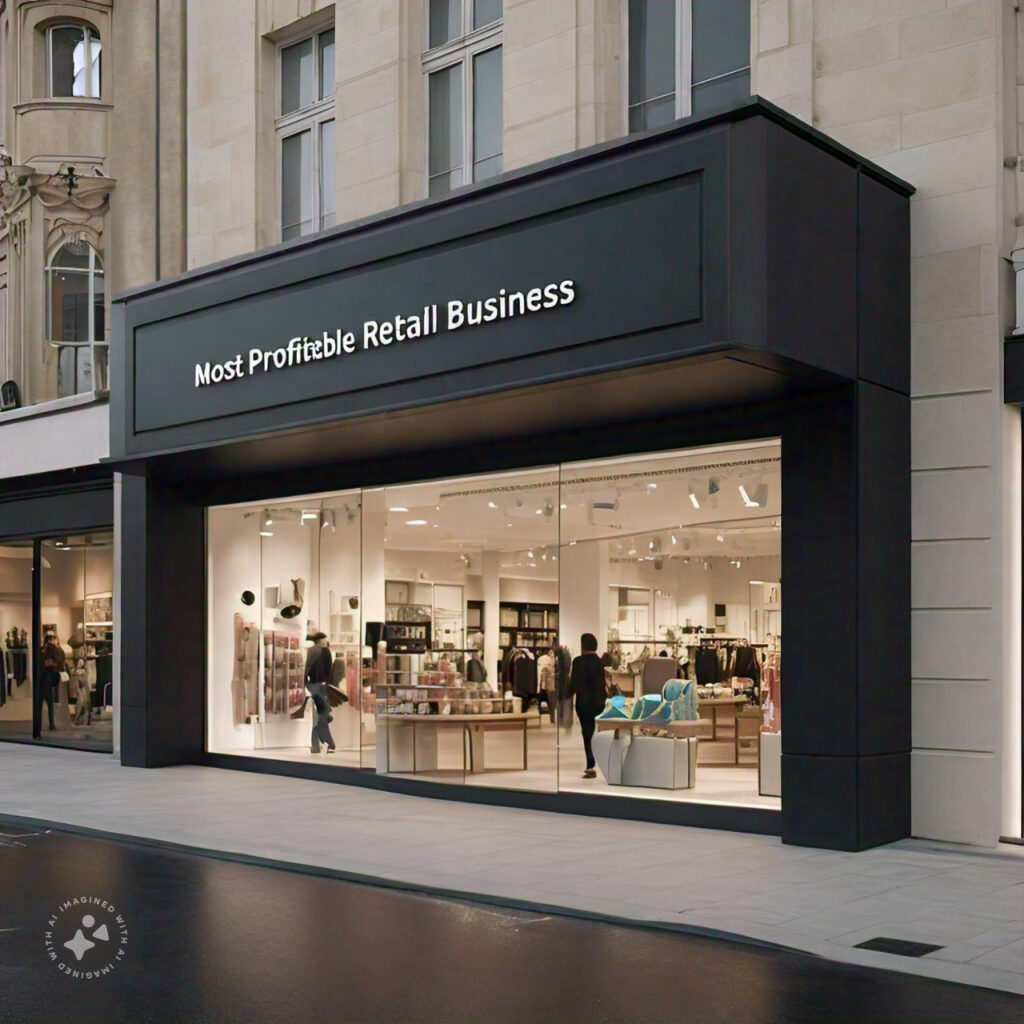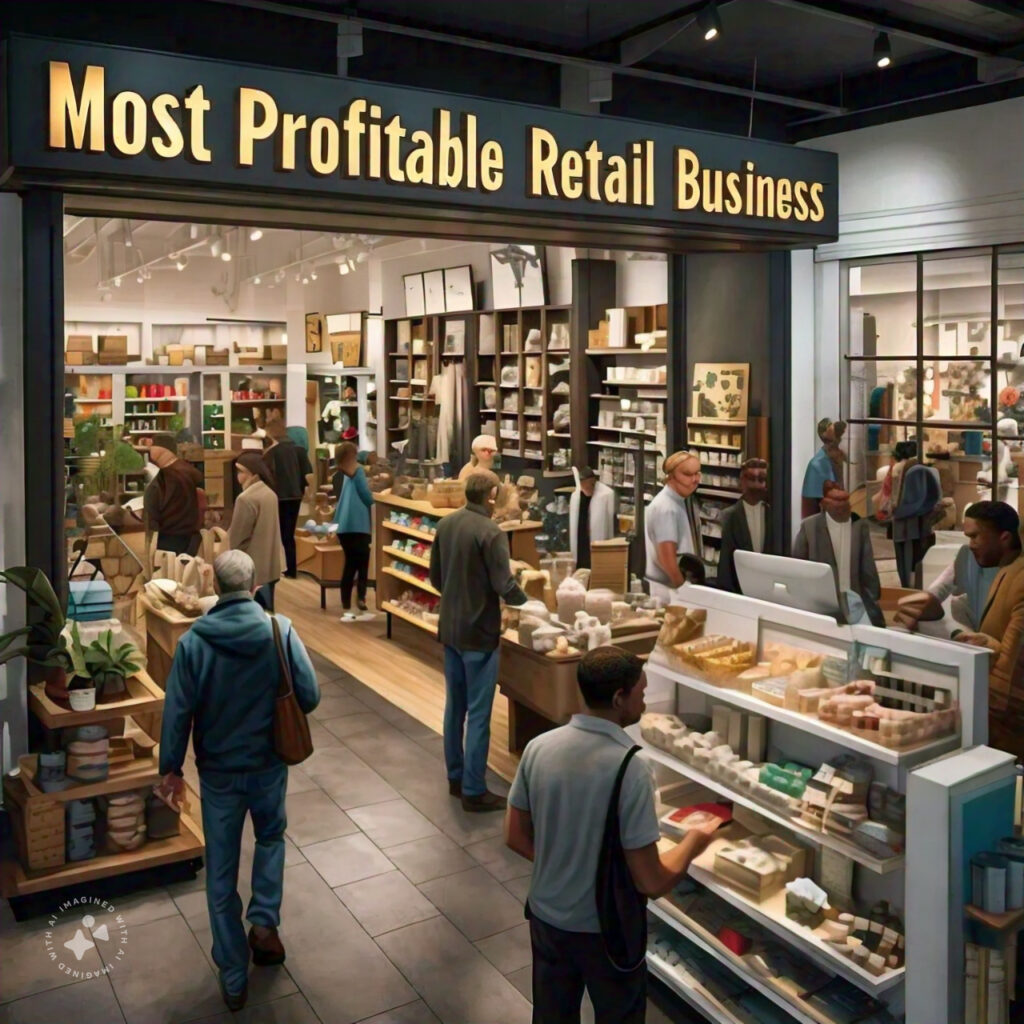In a changing retail environment, every man or woman in business and every investor looks for a magic formula to the question: Which type of retail business is the most profitable? Although there is no one-size-fits-all type of business, there are some ways and areas that bring in profits better than others.

This paper considers what kinds of retail businesses are most profitable and factors that enable them to achieve this level of success, along with the various challenges faced in the business. We will also consider new trends and approaches for maximizing profitability within retail.
Factors Impacting the Profitability of Retailers
In considering any particular retail sector, some common factors help ensure a retail business is profitable, including:
- Profit margins: The selling price minus the cost of goods sold.
- Sales volume: The number of units sold during a particular period.
- Overhead costs: Rent, utilities, wages of employees, etc.
- Market demand: How much consumers are willing to purchase what is on offer.
- Competition: Number and strength of competitors in the market
- Brand reputation: Value and trust customers attach to the brand.
- Place: Accessibility and visibility of physical stores
- Online presence: E-commerce operations and digital marketing effectiveness
Retail Sectors with Highest Profitability
While profitability may significantly vary from one business practice to another, there are specific retail sectors that have greater profit potential. Let us discuss some of the most profitable retail businesses:
- Luxury goods
Of all industry sectors, luxury retail represents the highest profit margin. High fashion, jewelry, timepieces, and other accessories can have profit margins higher than 50%. It is this notion of elitism, which very few can participate in, that allows luxury retailers to charge a premium for products.

Major drivers for luxury retail profitability include brand prestige, heritage, short production runs, high-quality materials, and superior craftsmanship.
- Tugs at the heart: status appeal to consumers
On the other hand, some of the threats which luxury retail faces are counterfeiting, fluctuation of the economy, which impacts how consumers spend, and the level of customer service expected of them by consumers.
- Electronics and Technology
The path of the electronic and technology industries has been one of continuous growth and profitability, fueled by the fast pace of innovation and consumers’ insatiable desire for the latest gadgets. Although profit margins for individual items are less compared with luxury goods, high volume sales and more frequent product cycles ensure good overall profitability.
The most profitable areas in the field of electronics retailing are:
- Smartphones and their accessories
- Gaming consoles and video games
- Smart home devices
- Computers and tablets.
Success within this sector comes from a triple strategy: being at the forefront of technology, efficiently managing inventory, and providing excellent customer support.
- Pharmaceuticals and Health Products
The pharmaceutical and health product retail sector has provided quite decent returns on investment, more so in past years. This comprises retail stores specializing in pharmaceuticals, health foods, and specialty health products. Expanding interest in wellbeing and aging population in many countries ensure a sound performance of this sector.
The most profitable areas of this industry include:
Prescription medications
Over-the-counter drugs
Vitamins and dietary supplements
Personal care products
The sector’s profitability is also supported by recurring customer needs, brand loyalty, and the essential nature of many products sold.
- Specialty Food and Beverage
Specialty food/beverage retailers have carved a niche for themselves within the retail environment, including gourmet food stores, artisanal coffee shops, craft breweries, and fine wine retailers. But it isn’t just that the unique offerings are of higher quality and uniquely talented in the eyes of the customer; it also allows them to charge premium prices for such exclusivity and solidify their customer loyalty.
The other key factors that would help determine profitability for this sector are:
Unique product
Quality/ authenticity
Brand story
Retail experiences
The challenge for specialty food and beverage retailers is how to balance the quality and uniqueness of their product with the demands of higher volume operations.
- Fast Fashion
Despite increased awareness about the lack of sustainability in fast fashion, this segment remains one of retail’s most profitable categories. Merchants in this sector exploit changing fashions, short production cycles, and low prices to achieve high volumes.
The two central characteristics of fast fashion profitability are:
- Fast inventory turns
- Effectiveness in supply chain management
Trendy design and production
Aggressive marketing and social media presence
However, pressure is mounting on fast fashion retailers to take measures addressing environmental and ethical issues that will apparently impair future profitability.
New Trends in Profitable Retailing
For any retailer to remain competitive and maximize profitability, there is a need to change with the emerging trends that are shaping the retail industry. Some of the trends affecting retailing profit include:
- E-commerce integration
The line that separated online from offline retail continues to blur. The best retailers are implementing multichannel strategies as fast as they can with their stores well integrated with powerful e-commerce sites. This way, the businesses can acquire more customers, save on their overheads, and still deliver an integrated shopping experience in a seamless manner.
- Subscription business Models
Subscription retail has been under the radar in the new economy because it allows steady streams of inflowing revenue and enunciates brand loyalty. From beauty boxes to meal kits, subscription services answer to needs for convenience and personalization.
- Experiential Retail
As online shopping continues to expand, physical stores are learning how to offer experiences that cannot be done in a digital environment. Retailers created immersive environments, hosted events, and offered personalized services to draw customers in-store and boost engagement.
Strategies to Attain Profit Maximization in Retail Business
Irrespective of the variations in the retailing market segments, the following are some of the strategies that are going to work for whichever business in ensuring profit maxim.
- Advanced Inventory Management
This is the hallmark of maintaining profitability in retail. Both overstocking have a compounding effect with a constant tie-up of capital. advanced inventory and under-stocking of inventory may arise in adversity of opportunity costs. Use of advanced inventory management systems and data analytics can be useful in attaining a perfect balance for the retailers.
Drive loyalty, higher average transactions, and positive word-of-mouth with extraordinary customer experiences. This includes personalized service, seamless omnichannel experiences, and responsive customer support.
- Data-driven Decision Making
By using data analytics, retailers can drive the right decisions on inventory, price, marketing, and stores. Knowing customer behaviors and preferences, retailers will be able to provide the right offerings and strategies that ensure profitability.
- Sustainable Practices
Though sustainability is considered a cost in the short term, it increases profitability in the long run. Sustainable operations help in cost reduction, attracting environmentally conscious consumers, and decreasing risks related to regulatory changes.
- Strategic Partnerships
Partnerships with complementary brands or influencers can help retailers access reach, improve brand image, and create unique product offerings that can be priced at premiums.
Challenges in High-Profit Retail Sectors
While some retail industries are very profitable, they are also confronted with special problems:
- Fierce competition: The high-profit industries draw many entrants, who contribute to saturating the market and squeezing profit margins.
- Shifting consumer preferences: Consumer tastes and preferences change rapidly, and inventory can become obsolete overnight, as in the case of fashion and technology products.
- Economic sensitivity: When economic conditions turn down, luxury goods and nonessential products are usually the first products to see demand slip.
- Supply chain: International events have the potential to interfere with the supply of goods; for example, this affects the inventory levels and, in turn, could lead to the loss of sales.
- Compliance: Sectors such as pharmaceuticals are subject to heavy regulation and often decrease profitability.
- Technological disruption: Dynamics in the market are extremely quick ripple effects of new technologies that subsequently demand continuous adaption and investment.
Future of Retail Profitability
The retail environment is continuously evolving through disruptive technological innovation, changing consumer behavior, and global economic dynamics. Down the line, a few trends are likely to shape retailer profitability:
- Personalization at scale: Leading retailers will be those that best personalize products and experiences using AI and data analytics.
- Sustainability focus: Companies that adopt sustainable practices will gain a competitive edge as consumers turn more and more green.
- DTC models: It allows those brands to capture more profit margin vs. cutting traditional retail.
- Augmented and virtual reality: The technologies have huge potential for altering both in-store and online shopping, driving high engagement and sales.
- Localization: Retailers who get more local in their offer around taste and culture might have more success globally.
- Artificial intelligence, and automation: embed AI and automation into the operations of the retail that help to reduce cost and enhance the efficiency, through which the creation of profitability can be made.
Conclusion
Although individual segments within retail, including luxurious goods, electronics, pharmaceuticals, specialty food and drink, and fast fashion, are doing incredibly well, retail success is not something that is hard-wired into the sector per se. The most profitable retail businesses are those that are able to change with the times and the tastes of their consumer base and use technology to their advantage while creating extraordinary customer experiences.
Key retail strategies that drive maximum profits are around operational efficiencies, decisions backed by deep analytics, and bettering the edge of continually changing industry trends. Profitability-driving strategies in the new retail world are mainly structured around channel integration across the web and store, subscription models, and in-store experiences.
The real key to retail profitability is understanding your target market, differentiating your offering, and continuing to deliver value. With the optimal product mix and effective operational strategies, and with an eye toward future trends, retailers can place themselves on the path to long-term profitability and success.






